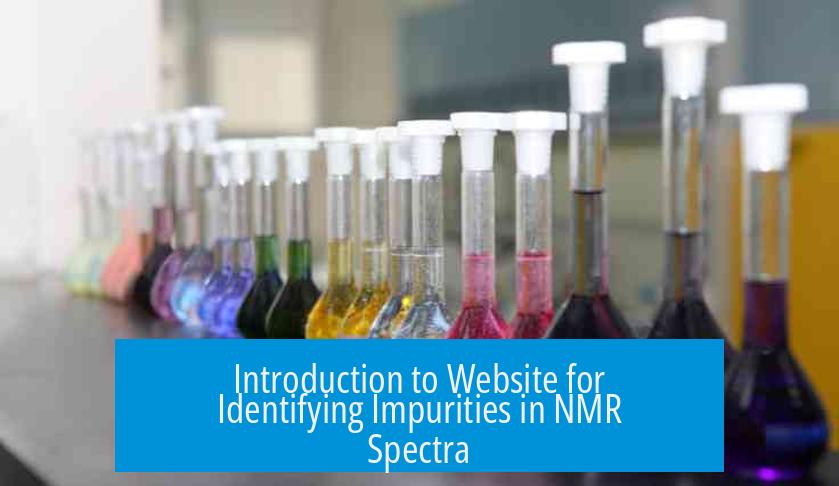Introduction to Website for Identifying Impurities in NMR Spectra

The website aims to assist users in identifying common impurities in Nuclear Magnetic Resonance (NMR) spectra. It provides a freely accessible tool that complements existing platforms like nmrs.io. The resource targets researchers and chemists who encounter unknown signals in their NMR data during structural analysis or quality control.
Purpose and Intended Use
The website serves as a practical aid to quickly match spectral peaks with known impurities. Users report forwarding the link within their research groups, appreciating the open availability. This accessibility facilitates collaboration and accelerates the impurity identification process. The tool can reduce guesswork and increase confidence in spectral interpretation by comparing signals against a curated impurity database.
Features and User Interface
- Multiplicity Settings: Users suggest defaulting multiplicity to “?” to broaden search results, as many impurities show non-singlet peaks.
- Shift Tolerance: Questions arise about peak matching precision and how closely the tool selects chemical shifts, indicating interest in tuning spectral tolerance for more accurate identification.
- Display Optimization: The interface appears streamlined for mobile use and performs better on Chrome browsers compared to Firefox. Compatibility and layout issues invite ongoing development attention.
Technical and Development Insights
Inquiries highlight curiosity about the coding and development process behind the website. This reflects a community interest in understanding construction details, possibly to contribute or replicate the tool.
Legal and Ethical Considerations
Some users express concerns about the legal standing of making spectral data widely accessible, especially if derived from paywalled sources. Clarification on fair use policies and intellectual property rights remains a key discussion point to ensure compliance and ethical distribution.
Key Takeaways
- The website supports identifying common impurities in NMR spectra, helping researchers interpret their data.
- Users value its free access and mobile-friendly interface but seek improvements in default settings and browser compatibility.
- Technical curiosity exists regarding the coding, suggesting potential for community-driven development.
- Legal questions regarding data sourcing indicate the need for clear fair use guidelines.
How does the website help identify impurities in NMR spectra?
The website allows users to input NMR data and match it with common impurity patterns. It serves as a complementary tool alongside existing resources for easier impurity detection.
Can I adjust search settings like multiplicity or shift tolerance?
You can set multiplicity, though “?” is recommended for broader results. The site shows closest matches based on a shift tolerance, which is pre-set but not user-adjustable yet.
Is the website optimized for specific browsers or devices?
The display works best in Chrome and on narrow screens, favoring mobile devices. Some users report issues with Firefox compatibility.
What technology or coding was used to build the website?
The site was developed with coding skills focused on user interaction and data matching, but specific programming languages were not detailed.
Is it legal to provide access to impurity data through this website?
There are questions about copyright and fair use, especially since similar data often lies behind paywalls. Legal clarity is still uncertain.




Leave a Comment